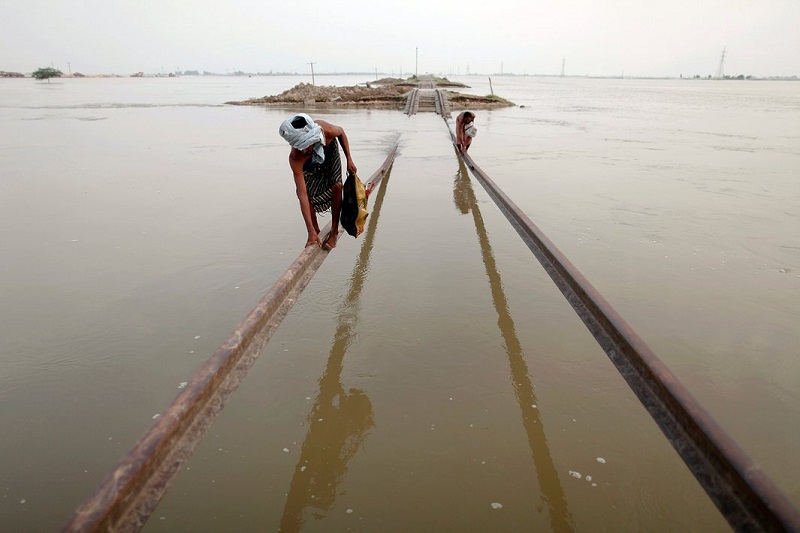Climate change: ‘human fingerprint’ found on global extreme weather

Global warming makes temperature patterns that cause heatwaves, droughts and floods across Europe, north America and Asia more likely, scientists find The fingerprint of human-caused climate change has been found on heatwaves, droughts and floods across the world, according to scientists. The discovery indicates that the impacts of global warming are already being felt by society and adds further urgency to the need to cut carbon emissions. A key factor is the fast-melting Arctic, which is now strongly linked to extreme weatheracross Europe, Asia and north America. Rising greenhouse gases in the atmosphere have long been expected to lead to increasing extreme weather events, as they trap extra energy in the atmosphere. But linking global warming to particular events is difficult because the climate is naturally variable. The new work analysed a type of extreme weather event known to be caused by changes in “planetary waves” – such as California’s ongoing record drought, and recent heatwaves in the US and Russia, as well as severe floods in Pakistan in 2010. Planetary waves are a pattern of winds, of which the jet stream is a part, that encircle the northern hemisphere in lines that undulate from the tropics to the poles. Normally, the whole wave moves eastwards but, under certain temperature conditions, the wave can halt its movement. This leaves whole regions under the same weather for extended periods, which can turn hot spells into heatwaves and wet weather into floods. This type of extreme weather event is known to have increased in recent decades. But the new research used observations and climate models to show that the chances of the conditions needed to halt the planetary waves occurring are significantly more likely as a result of global warming. “Human activity has been suspected of contributing to this pattern before, but now we uncover a clear fingerprint of human activity,” said Prof Michael Mann, at Pennsylvania State University in the US and who led the study published in the journal Scientific Reports. Kai Kornhuber, at the Potsdam Institute for Climate Impact Research (PIK) in Germany and another member of the research team, said: “We looked into dozens of different climate models, as well as into observational data, and it turns out that the temperature distribution favouring planetary wave stalling increased in almost 70% of the simulations.”

